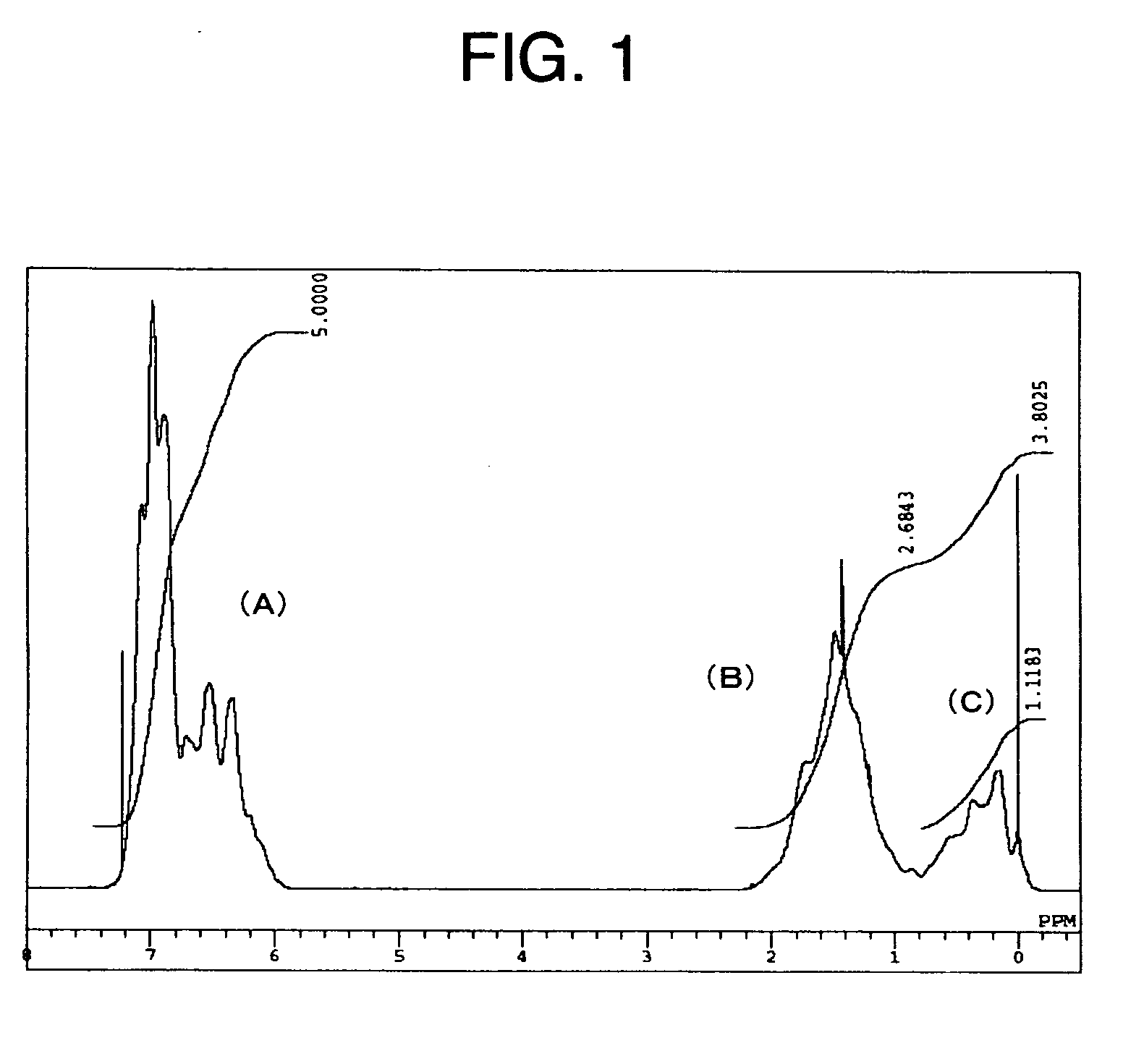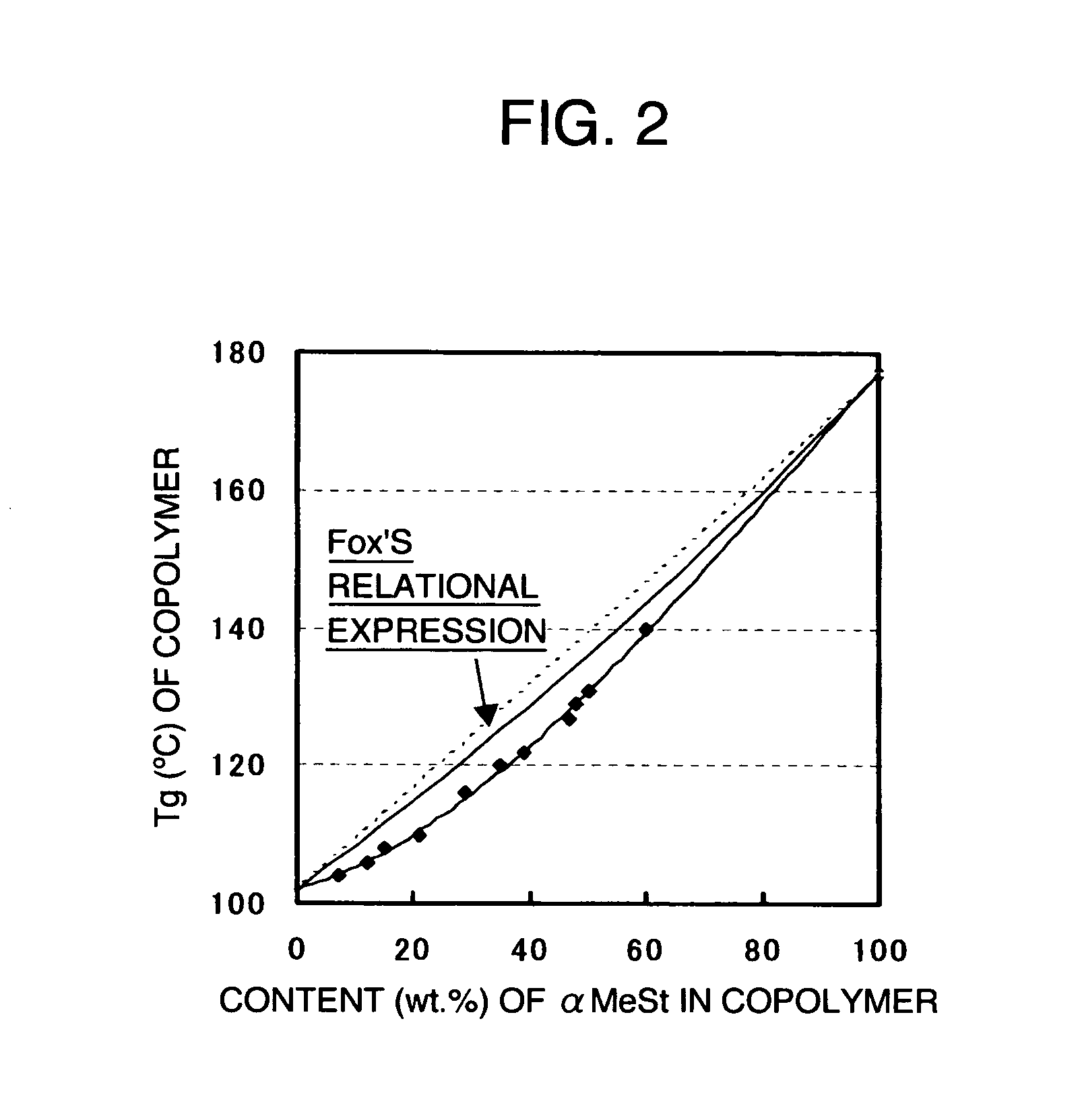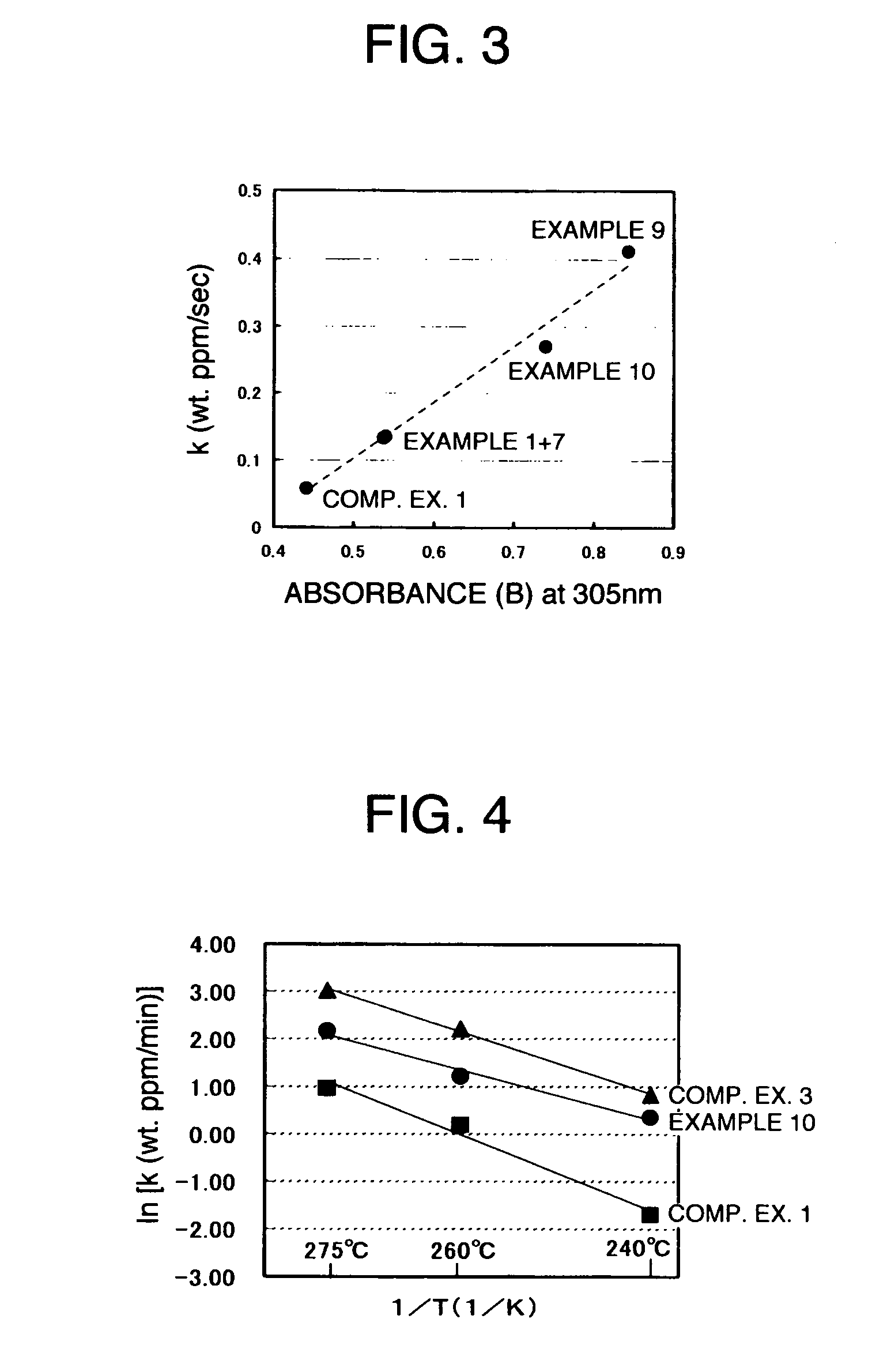Syrene copolymer and process for producing the same
a technology of syrene and copolymer, applied in the field of styrene copolymer, can solve the problems of copolymer not being sufficiently accepted by users, degradation of molding-processing properties, unsatisfactory use, etc., and achieve excellent heat resistance and weatherability, excellent melt stability, rigidity and recycle properties
- Summary
- Abstract
- Description
- Claims
- Application Information
AI Technical Summary
Benefits of technology
Problems solved by technology
Method used
Image
Examples
example 1
[0227]
[0228] A solution of styrene (St; SUMITOMO CHEMICAL CO., LTD.), α-methylstyrene (α-MeSt; Mitsui Chemicals, Inc.) and cyclohexane (CH; IDEMITSU PETROCHEMICAL CO., Ltd.), wherein styrene (St), (α-methylstyrene (α-MeSt) and cyclohexane (CH) are mixed with each other at a rate of St(% by weight) / (α-MeSt(% by weight) / CH(% by weight)=27 / 18 / 55, was stored in a storage tank, followed by bubbling with nitrogen. Thereafter, the solution was passed through the interior of a 5-liters volume refinery tower as filled with an activated alumina (KHD-24 of SUMITOMO CHEMICAL CO., LTD.) so as to remove t-butylcatechol, which is a polymerization inhibitor.
[0229]
[0230] n-butyllithium (a solution of 15% by weight of n-butyllithium in n-hexane, of Wako Pure Chemical Industries, Ltd.) was diluted with cyclohexane to 1 / 51 time.
[0231]
[0232] A solution of methanol (with highest quality, of Wako Pure Chemical Industries, Ltd.) and cyclohexane, wherein methanol was diluted with cyclohexane so that a 3% ...
examples 2 to 8
, and 10 to 12
[0237] Except for the conditions for: the composition of the raw material solution comprising styrene, α-methylstyrene and cyclohexane (CH), the flow rate of the raw material solution into the polymerization reactor, and the flow rate of the initiator solution into the polymerization reactor, as shown in Table 1, conditions and manners similar to the ones in Example 1 were employed for polymerization. In Table 1, various production conditions including the rate of conversion of each of monomers as abstracted from the polymerization reactor are shown. Furthermore, in Table 2, the results of the composition of the resultant copolymer in pellet, the molecular weight and the like are shown.
example 9
[0238] A pelletized polymer was produced under conditions similar to the ones in Example 8, except that a polymerization temperature was set to 105° C. The molecular weight of the resultant polymer were Mw=117,000 and Mn=59,000, and the Tg was 127° C. In Table 1, various production conditions are shown. In Table 2, the composition of the resultant styrenic polymer, the molecular weight thereof and the like are shown.
[0239] The relationship between [the content (% by weight) of α-methylstyrene in the copolymer pellets as obtained in each of Examples 1 to 12] and [the glass-transition temperature of the copolymer] is shown in FIG. 2.
[0240] In a copolymer of styrene and α-methylstyrene, as produced according to a conventional production method, the relationship between the content of (α-methylstyrene and Tg showed Fox's relationship, or a direct-proportional relationship (for example, see Non-Patent Document No. 1). However, it has been found that a styrenic copolymer as produced acc...
PUM
| Property | Measurement | Unit |
|---|---|---|
| ceiling temperature | aaaaa | aaaaa |
| glass-transition temperature | aaaaa | aaaaa |
| glass-transition temperature | aaaaa | aaaaa |
Abstract
Description
Claims
Application Information
 Login to View More
Login to View More - R&D
- Intellectual Property
- Life Sciences
- Materials
- Tech Scout
- Unparalleled Data Quality
- Higher Quality Content
- 60% Fewer Hallucinations
Browse by: Latest US Patents, China's latest patents, Technical Efficacy Thesaurus, Application Domain, Technology Topic, Popular Technical Reports.
© 2025 PatSnap. All rights reserved.Legal|Privacy policy|Modern Slavery Act Transparency Statement|Sitemap|About US| Contact US: help@patsnap.com



